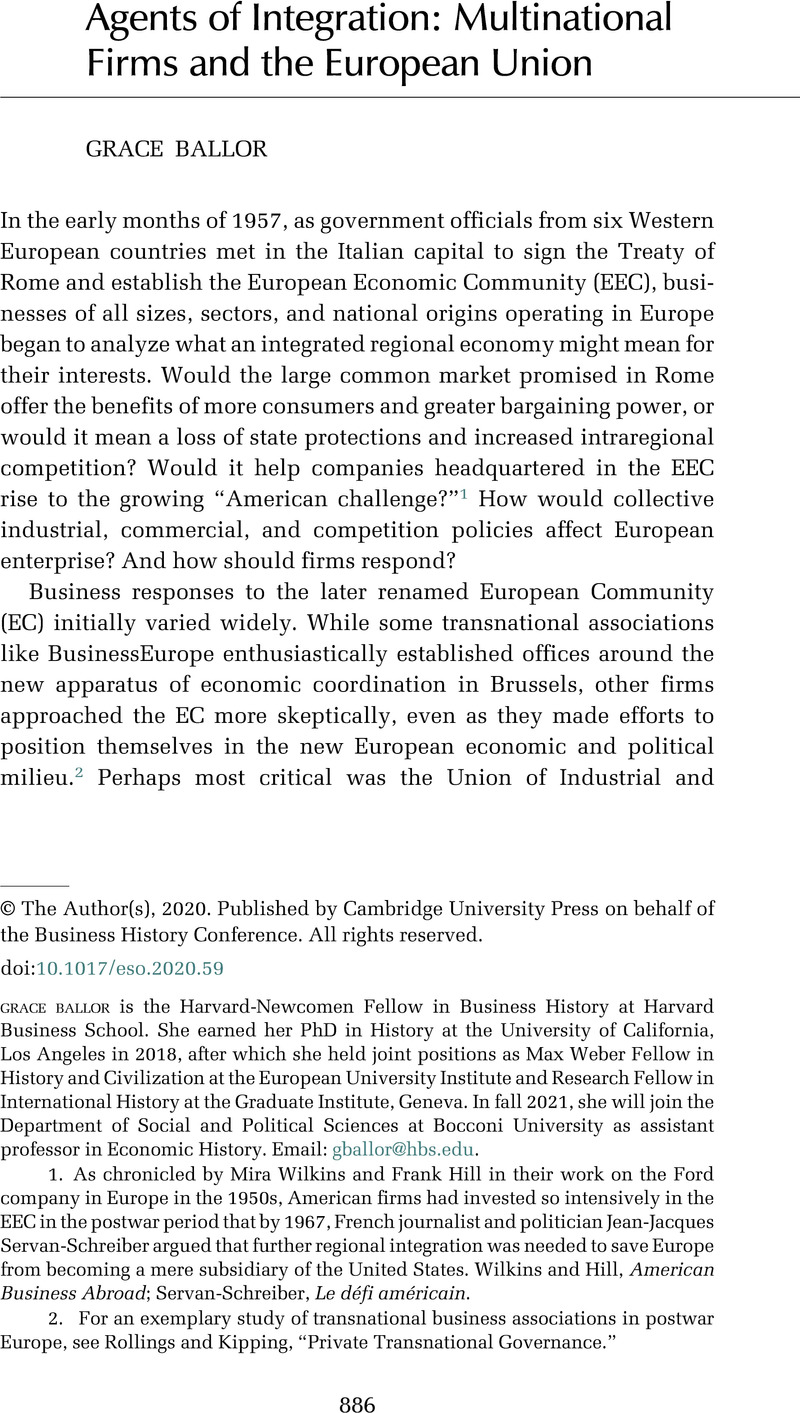Crossref Citations
This article has been cited by the following publications. This list is generated based on data provided by Crossref.
ROLLINGS, NEIL
2021.
“The Vast and Unsolved Enigma of Power”: Business History and Business Power.
Enterprise & Society,
Vol. 22,
Issue. 4,
p.
893.
Pitteloud, Sabine
Ballor, Grace
Clavin, Patricia
Perrone, Nicolas Marcelo
Rollings, Neil
and
Slobodian, Quinn
2022.
Capitalism and Global Governance in Business History: A Roundtable Discussion.
SSRN Electronic Journal ,
Dimier, Véronique
and
Stockwell, Sarah
2023.
Development, Inc.? The EEC, Britain, Post-Colonial Overseas Development Aid, and Business.
Business History Review,
Vol. 97,
Issue. 3,
p.
513.
Rollings, Neil
2023.
Business and Global Capitalism: Continuities and Change.
Business History Review,
Vol. 97,
Issue. 3,
p.
620.
Felisini, Daniela
and
Paesani, Paolo
2024.
Industrial Policy and its Funding at the Frontier of European Integration: Lessons from the Past and Present Challenges.
Enterprise & Society,
p.
1.



